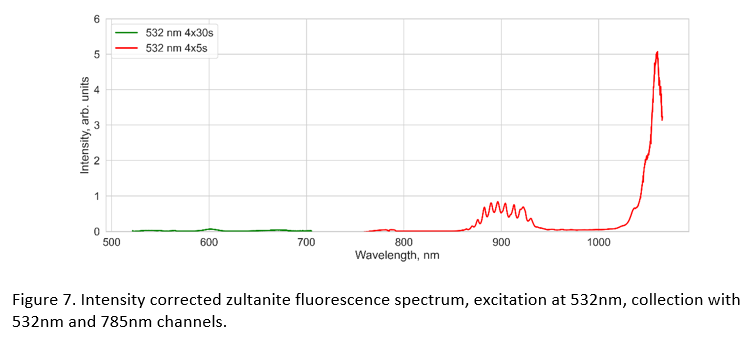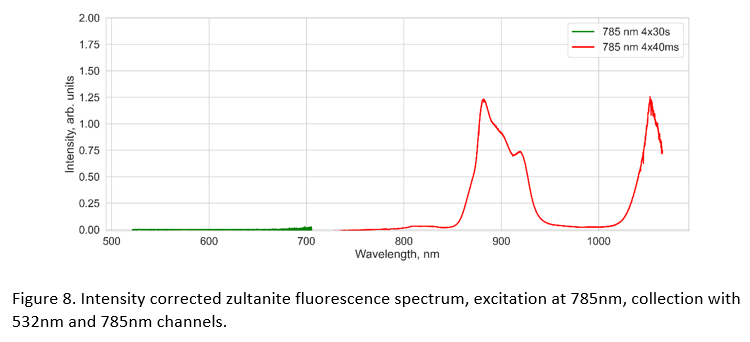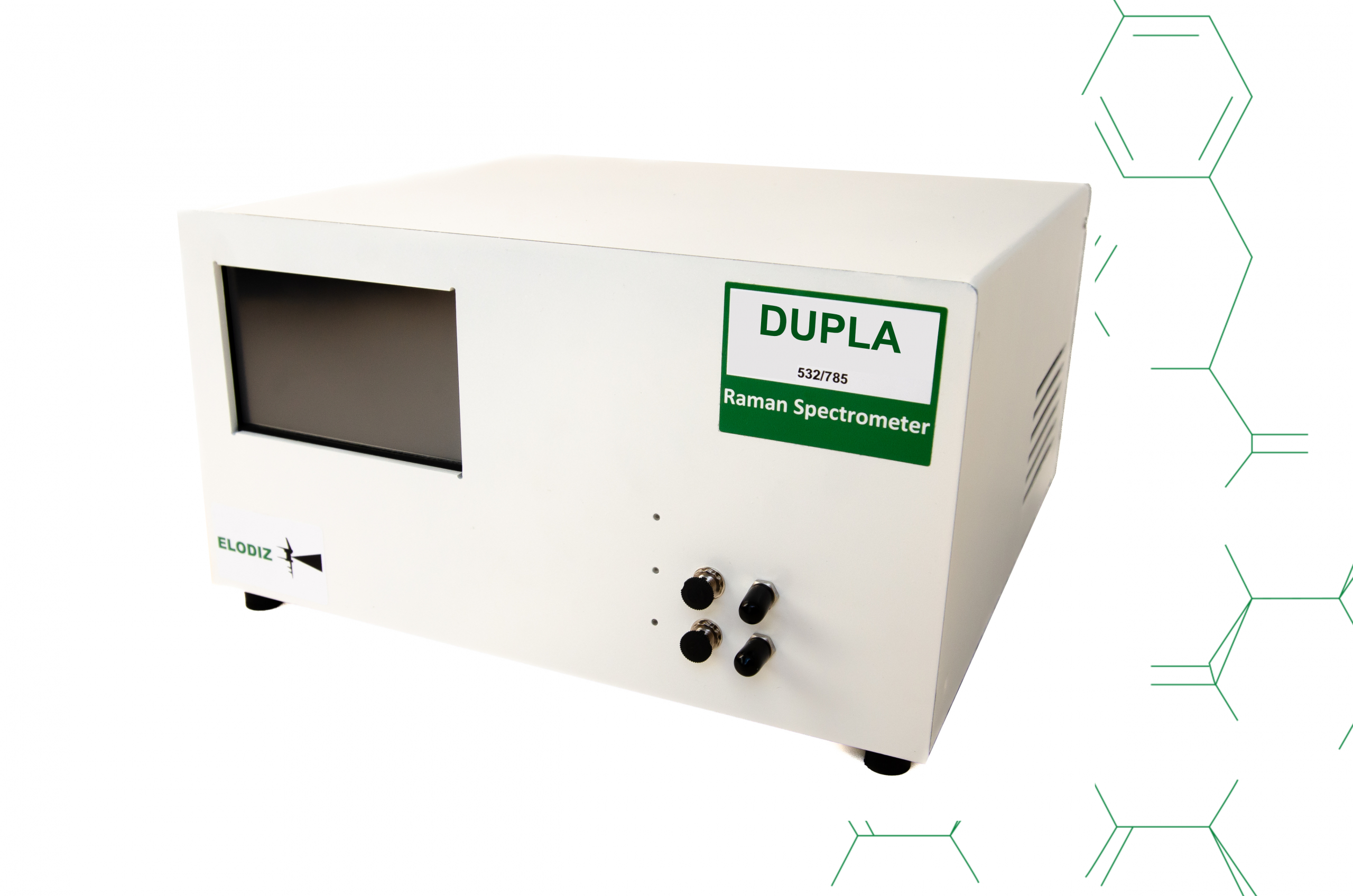Using a small footprint multichannel Raman system for the fluorescence analysis of synthetic zultanite
by Dr Yaroslav Aulin & Dr Enrique Lozano
Overview
Fluorescence is what Raman spectroscopy users continuously fear. The activation of fluorescence process while acquiring a Raman spectrum means that it is likely that the acquired Raman spectrum will present a heavy offset of the baseline and in some cases, that the Raman spectrum will not be visible at all. Furthermore, as the spectral range of a Raman spectrometer is a restricted window, the potential of using it as a fluorescence detector is limited. Recently developed ELODIZ dual channel NEEGALA Raman system offers new possibilities to spectroscopy users. The unit contains two Raman channels (532nm and 785nm) which can be operated independently, but the unit also allows the user to merge both channels into one in certain situations.
In the case study presented in this application note, we analyse the use of the NEEGALA unit as a tool to identify gemstones with no distinctive Raman signature.
Meet Zultanite
Zultanite® or sultanite is a semiprecious gemstone variety of the mineral diaspore, naturally mined in Anatolian Mountains in Turkey. Zultanite is a “colour changing” gemstone like alexandrite (green and red), however, it differs slightly to alexandrite due to the fact that it can display a much larger range of colours – from browns and yellows to pink and reddish colours. This means that the stone appears to change colour depending on the illumination (warmth of the incident light) and the angle from which the stone is observed. Until recently, only natural zultanite was commercial, but in recent years, new synthetic stones have been introduced to the market.
Diaspore is an aluminium oxide hydroxide (AlO(OH)) by chemical composition and has orthorhombic crystal structure. As per RRUFF.Info database, diaspore presents weak (or very weak) signals at 154, 330, 448, 498, 552, 664 Raman Shift (cm-1). Unfortunately, the presence of fluorescence masks any Raman signature.
We performed laser-induced fluorescence spectroscopy studies of synthetic zultanite gemstones using ELODIZ NEEGALA 532/785 Raman spectrometer.

Experimental data
Raman/fluorescence spectra were acquired with 532nm laser (30s exposure, 4 averages) and 785nm laser (40ms exposure, 4 averages). The spectra are provided in Figures 2 and 3 on wavenumber and wavelength scale respectively. Figure 2 shows how the acquired spectrum is strongly dominated by fluorescence.
We were not able to detect any Raman peaks corresponding to diaspore mineral. Figure 3 shows the individual Raman spectra (individual scans at 532nm and 785nm) with only fluorescence signature as a result, plotted on a continuous wavelength scale.


In addition to normal “Raman-type” measurement we also performed fluorescence measurements, when the sample was excited at 532nm (Figure 4), or 785nm (Figure 5), and the emission was collected with both 532nm and 785nm channels simultaneously.



Intensity correction
We performed intensity correction of the fluorescence data by calibrating the intensity response of the spectrometers across the spectral range using NIST reference samples. Intensity corrected fluorescence data are provided in Figures 7 and 8.


As we can see, upon intensity correction, the 1050nm fluorescence band becomes more pronounced.
Variations between gemstones
We performed measurements of 6 zultanite gemstones. The spectra are provided in Figure 9. The samples were excited with the 785nm laser. Normalised spectra are provided in Figure 10.
As we can see there is almost a perfect match between all the spectra. This means that although Raman signal cannot be detected, we can use fluorescence signal for identification of the synthetic zultanite gemstones.

Conclusion
Zultanite gives strong luminescence in 850..950nm range when excited with 785nm laser, the emission in the same range is weaker when excited with 532nm laser.
Zultanite gives weak luminescence at around 600nm when excited with 532nm laser.
We were not able to detect any Raman lines in the spectra of synthetic zultanite which would correspond to the Raman spectra of diaspore reported in the RRUFF database.
References
1. https://en.wikipedia.org/wiki/Zultanite
2. https://www.geologyin.com/2020/07/zultanite-color-changing-stone.html
3. https://zultanite.com/
4. https://rruff.info/diaspore/display=default/R060287
To find out more about our products please go here.



